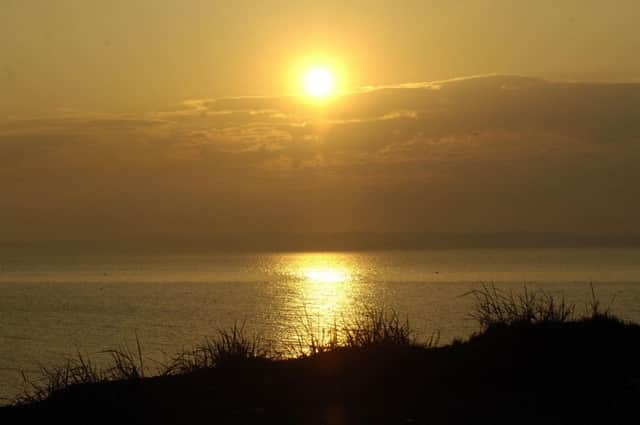Firth of Forth now linking highway communities


On the 7th of August a new ferry service was launched on its maiden voyage on the Firth of Forth, offering passengers the chance to travel from North Berwick to Anstruther in Fife. The service, which is the culmination of a joint project involving; SEStran, The Sealife Centre, East Lothian Council and ferry operators Seafari Adventures, follows the ancient pilgrimage route to St Andrew’s dating back at least 1,000 years.
SEStran has participated in the project through our involvement with iTransfer (Innovative Transport Solutions for Fjords, Estuaries and Rivers); an EU funded project which aims to make ferry transport more accessible and sustainable, and to encourage more people to travel by water in the North Sea Region.
Advertisement
Hide AdAdvertisement
Hide AdSEStran believes that the Forth should be a highway, linking communities throughout South East Scotland not a barrier. In the past many vessels plied the crossing between Fife and the Lothians, yet somehow as the years went by, for one reason or another, these have all fallen by the wayside. Today travellers must spend hours going the long way round by land, either on public transport or in the car, while the obvious solution – ferry transport – is unavailable.
Thanks to 165,388 Euros of EU funding provided through iTransfer, SEStran in partnership with East Lothian Council, was able to carry out £488,288 of extensive improvements to Galloway Pier, in North Berwick, as a first step in establishing the new ferry service. The level of the pier was raised by one metre and extended to make it accessible over a longer period during low tide, when otherwise the surface level of the pier is too low relative to the level of vessels and the nearby harbour is dry and unusable. Access to the pier was also enhanced by improving the gradient of the pier from the back of the harbour, widening the path and installing a handrail. Meanwhile a new vessel was commissioned by Seafari Adventures that would make full use of modern technology to make the service as sustainable as possible.
These included installing computer controlled fuel flow meters to feed live fuel flow information to the bridge control panel, enabling the skipper to measure engine revs, temperature and oil pressure, ensuring that the engine is used in the most efficient manner possible. New Trim tabs, which dictate the speed at which the vessel may travel, were installed and tested and a range of bio fuels also tested to determine the most effective and least polluting mix. Combined with a state of the art catamaran design, these innovations ensure that the new vessel is undoubtedly one of the most efficient and sustainable craft currently plying the Forth.
We hope that the new service will be a trendsetter and lead to a greater use of the Forth as a transport resource - rather than an obstacle that must be circumvented with much time and trouble by road. The Estuary is replete with small ports that have fallen into decline as the size of merchant vessels has increased, but these have the potential to play a key role in solving South East Scotland’s transportation problems, if only we apply some ingenuity.
In 2007, SEStran in partnership with Stagecoach, held a trial hovercraft foot passenger service from Kirkcaldy to Edinburgh, offering an 18-minute journey from Kirkcaldy to Portobello; a major improvement on driving the length of Fife and crossing the Forth Bridge to get to the capital, and faster than the existing rail link.
The project was a huge success, with passengers queuing around the block. Infrastructure for a permanent service would have been modest and, potentially, hundreds of cars would be taken off the regions roads.
The experiment proved that there is also the potential for another possible foot passenger ferry service from Burntisland to Granton. Several other sites on either bank of the Forth may also offer similar future possibilities, but to date the estuary stands largely unused for water-borne passenger transport from Fife to the Lothians.
Today the new ferry service from North Berwick to Anstruther will once again reveal the potential for ferry services across the Forth. The estuaries existing harbour infrastructure stands ready to be brought back into service, transforming it from an under-used resource into a bustling thoroughfare; reducing regional traffic congestion; enhancing the quality of life of our citizens and potentially supporting local and international commerce.
Advertisement
Hide AdAdvertisement
Hide AdSustainable water transport on the Forth could provide the key to solving many of the transportation problems that south-east Scotland faces. Its only limitations are those which we choose to impose upon it with our lack of vision.
The new ferry service is one small step in turning the Forth back from being a barrier to a highway connecting communities throughout South East Scotland.
• Cllr Russell Imrie is chair of SEStran www.sestran.gov.uk
SEE ALSO